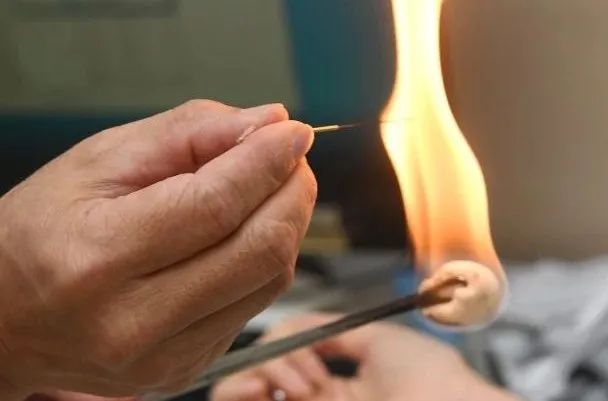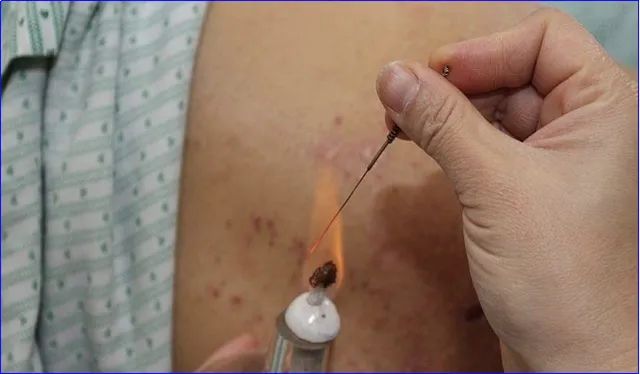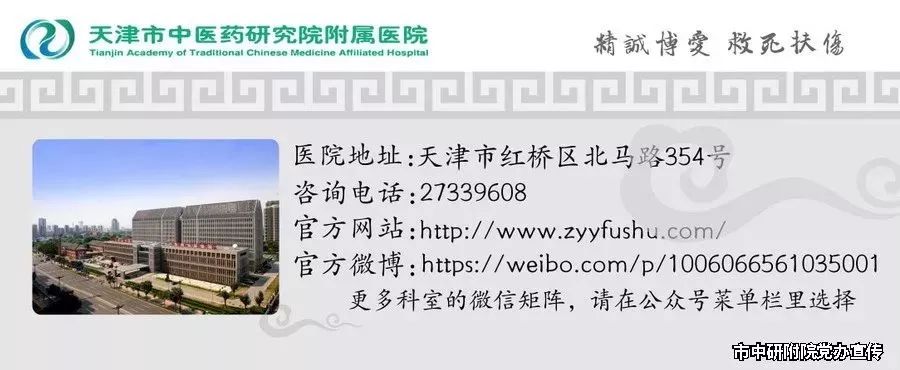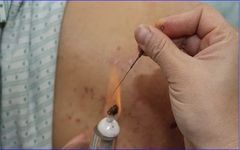
In the “Traditional Chinese Medicine Treatment” series, I have previously introduced the techniques of bloodletting cupping and plum blossom needle therapy. Today, let’s explore “What common skin diseases can fire needle therapy treat?”

1. Why can fire needle therapy be used to treat skin diseases?
Fire needle therapy is one of the external treatment methods in Traditional Chinese Medicine (TCM) that involves stimulating local areas or acupoints with heated needles. Fire needle therapy combines the stimulating effects of acupuncture with the warming effects of fire.
When treating skin diseases, fire needle therapy has the following effects:
① Fire needle therapy can open the meridians to expel evil, dispel wind and dampness, and clear heat and detoxify;
② Fire needle therapy can unblock the meridians, warm the meridians, invigorate the qi, and support the righteous qi while expelling evil;
③ Fire needle therapy can also use heat to assist yang, warm and support yang qi, regulate local qi and blood, promote blood circulation, improve local metabolism, facilitate skin barrier repair, and promote normal skin growth.
Fire needle therapy can treat skin diseases, and the possible mechanisms in Western medicine include: Fire needle therapy can inhibit and kill bacteria and viruses through high temperatures, reduce inflammation, promote the balance of skin microbiota, and facilitate skin regeneration. During treatment, fire needle therapy can dilate capillaries, accelerate blood circulation, promote metabolism, and enhance skin regeneration and repair. Additionally, fire needle therapy can disrupt local skin and subcutaneous structures, thereby influencing the microenvironment of local tissues to regulate the immune-endocrine-neural systems to achieve therapeutic effects.

2. What common skin diseases can fire needle therapy treat?
1. Herpes Zoster
For the acute phase of herpes zoster, fire needle therapy can promote the release of the herpes virus from the vesicles. By using heat to draw out heat, clearing heat and detoxifying, and using high temperatures to kill the virus, it can facilitate the drying of early herpes lesions and accelerate wound healing, while also alleviating pain associated with herpes zoster.
Fire needle therapy can open the meridians to expel evil, warm the meridians, assist yang, and invigorate qi, thereby promoting blood circulation and nerve repair, which can treat postherpetic neuralgia, postherpetic itching, numbness, and other postherpetic sequelae.
2. Eczema
For acute eczema, fire needle therapy can clear heat and detoxify, open the meridians to expel evil, achieving effects such as dispelling dampness and relieving itching. Additionally, the high temperature can act on the bacterial inflammation in the eczema area, promoting the resolution of inflammation, reducing exudation and edema, and facilitating healing.
For chronic eczema, fire needle therapy can eliminate local evil qi to relieve itching, and also unblock the meridians to improve local qi and blood circulation, promoting skin repair.
3. Vitiligo
Fire needle therapy can warm the meridians, assist yang with fire, promote the smooth flow of qi and blood, which is beneficial for stimulating tissue repair and promoting the formation of melanocytes in the damaged skin area, allowing normal skin to grow.
4. Scleroderma
Fire needle therapy can warm the local area, assist yang with fire, support yang qi, invigorate local qi and blood circulation, improve local blood circulation and metabolism, and promote normal skin growth.
5. Psoriasis
Fire needle therapy can promote the circulation of qi and blood through warming effects, improve blood circulation, enhance local metabolism, improve the skin barrier, relieve itching, and reduce skin lesions.
6. Acne
Fire needle therapy for acne can directly promote the killing of Propionibacterium acnes, and also clear heat and detoxify, drain pus, dispel dampness and turbidity, and promote the elimination of inflammatory substances, facilitating the resolution of inflammation.
7. Erysipelas
Fire needle therapy can clear heat and detoxify, and through bloodletting, promote the resolution of inflammation, reduce swelling and pain, and invigorate blood circulation, thereby accelerating the healing of erysipelas.
8. Furuncles
Fire needle therapy can clear heat and detoxify, dispel dampness and turbidity, drain pus, and disperse nodules, promoting the resolution of furuncles and inflammation.
9. Stasis Dermatitis
Fire needle therapy can clear heat and detoxify, and through bloodletting, promote blood circulation, improve local skin metabolism, and control itching, reduce edema, and improve skin pigmentation and hyperplasia.
10. Prurigo
Fire needle therapy can open the pores, expel evil, and promote the expulsion of dampness, wind, and other evil qi, alleviating itching, thus aiding in controlling skin rashes.
11. Neurodermatitis
Fire needle therapy can warm the meridians, promoting local qi and blood circulation, thereby alleviating itching symptoms, and also promoting the repair of the nerve barrier, reducing recurrence.
12. Warts
Fire needle therapy can directly act on the virus and wart body through the physical effects of high temperature, promoting the rapid regression of warts, characterized by minimal damage and quick recovery.
3. Does fire needle therapy hurt?
Depending on the disease and the patient’s constitution, different needle types and fire needle techniques will be selected. Generally, the thicker the needle, the deeper the insertion, and the greater the intensity of stimulation from the fire needle.
Most patients can tolerate the transient discomfort caused by fire needle therapy.
4. What precautions should be taken during fire needle therapy?
① After fire needle therapy, the needle holes may appear slightly red, hot, itchy, or mildly painful, which are normal phenomena and do not require treatment; do not scratch.
② The treated area should be kept dry and clean, avoiding water and topical oils or ointments for 24 hours.
③ Individuals who are overly tense, have excessive sweating, are fatigued, hungry, or overly full should avoid this therapy.
④ Fire needle therapy should avoid areas with arteries, nerve trunks, etc.
⑤ Patients with bleeding disorders, diabetes, scar constitution, or allergic constitution should use this therapy with caution.
The Dermatology Department of the Affiliated Hospital of Tianjin University of Traditional Chinese Medicine specializes in the combined treatment of skin diseases with both TCM and Western medicine, achieving good clinical results for difficult skin conditions such as psoriasis, acne, herpes zoster, facial dermatitis, refractory eczema, alopecia, and nodular prurigo. The department is committed to leveraging the holistic regulatory advantages of TCM, combining herbal medicine with syndrome differentiation treatment, and actively developing individualized treatments such as acupuncture, fire needle therapy, moxibustion, herbal baths, hot compresses, and ointments to safeguard the health of skin disease patients!
Source: Dermatology Department of Tianjin University of Traditional Chinese Medicine



Previous Highlights
[Targeted Assistance] “Thank you, Tianjin Xinjiang Experts!” – Our hospital’s Xinjiang aid staff have been praised for their dedication to safeguarding the health of border residents.
[World Leprosy Day] Is leprosy really scary? This article helps you understand it.
[New Year Greetings] Moving forward without pause, the future is promising – New Year greetings from Tianjin University of Traditional Chinese Medicine for 2023.
Skin experts “team up” for consultations, providing one-stop solutions for patients’ difficult issues – The Dermatology Department of the Affiliated Hospital of Tianjin University of Traditional Chinese Medicine has conducted multidisciplinary consultations for over 3,000 patients with complex cases.
[Learning, Promoting, and Implementing the Spirit of the 20th National Congress] Key questions to know and understand the spirit of the 20th National Congress (8)


